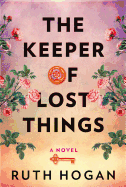Yesterday, at the American Library Association's Youth Media Awards in Atlanta, Ga., Kelly Barnhill won the Newbery Medal for her fourth fantasy novel, The Girl Who Drank the Moon (Algonquin Books for Young Readers). Her novels The Witch's Boy and The Mostly True Story of Jack received four starred reviews, and Iron Hearted Violet received a Parents' Choice Gold Award and was an André Norton Award finalist. She lives in Minnesota with her husband and three children. Barnhill talked with Shelf Awareness on the phone shortly after winning the Newbery for her delightful, thought-provoking fantasy about "a 500-year-old witch and a poetry-quoting swamp monster and a perfectly tiny dragon with delusions of grandeur who all have to raise a magical baby."
_Bruce_Silcox_012317.jpg) |
| photo: Bruce Silcox |
Congratulations, Kelly! Tell us about "the call." Everyone always wants to hear the stories of where the authors were when they received their early-morning call from the Newbery Medal committee.
Nobody tells you how weird it is to get woken up at 5:15 in the morning by a roomful of librarians, you know. I was literally dead asleep. Dead, dead, dead asleep. Because it did not occur to me that this was even a remote possibility. And, in fact, there were a couple of people, even this weekend, who said it could happen, and each time I responded to them with total derision and disdain.
I have my phone in my room and my kids had changed the ringtone to the opening theme song for Wonder Woman, the old '70s TV show. So, first of all, that blasts me awake and I was totally disoriented, and I answer the phone and it's literally a roomful of librarians... cheerful librarians! And they're so excited. It's moving to me, because I know how much work goes into that, how seriously they take children's literature. That made me cry a little bit. Not so much what they were saying to me, but their work.
It's a strange thing for me because this book is incredibly dear to my heart-- and I was proud of it--but I didn't think that anyone would like it when I published it, honestly. In fact I had pre-written all my terrible reviews in my head... to save people the trouble... because I'm a Minnesotan, and I like to be helpful. But the first reviews came back so positive, I was shocked by it.
Tell us about the 13-year-old girl in The Girl Who Drank the Moon.
Luna! Luna is a child who does not know her own story. She only knows parts of her own story. She was a fun character to write because she's being raised by a very strange, but very loving family. When people ask me what my book's about, it's always very fun to say I'm writing a book about a 500-year-old witch and a poetry-quoting swamp monster and a perfectly tiny dragon with delusions of grandeur who all have to raise a magical baby. But the story's really about Luna.
She's coming to grips with the fact that her body is changing and her life is changing and her mind is changing in ways that happen to all of us, because all of us do grow. We realize that the world is not what we thought it was. And that can be confusing and enraging too, right? Sometimes kids, in the process of their growing up, experience rage because "Why is it like this and why is it that the things that I once could rely on, I suddenly can't?" Suddenly their forward motion is on their own two feet.
I liked writing about Luna because Luna is a prickly girl. I like writing about prickly girls and knowing about prickly girls because I was a prickly girl, and prickly girls don't get the credit that they need. She's prickly for a reason. She has a lot going on, a lot that she's trying to understand. But in the midst of all that is she feels so deeply. Her love for her grandmother and for her swamp monster and for her dragon are incredibly genuine, even though she understands that she's not being told the whole truth and that her family's need to protect her is genuine.
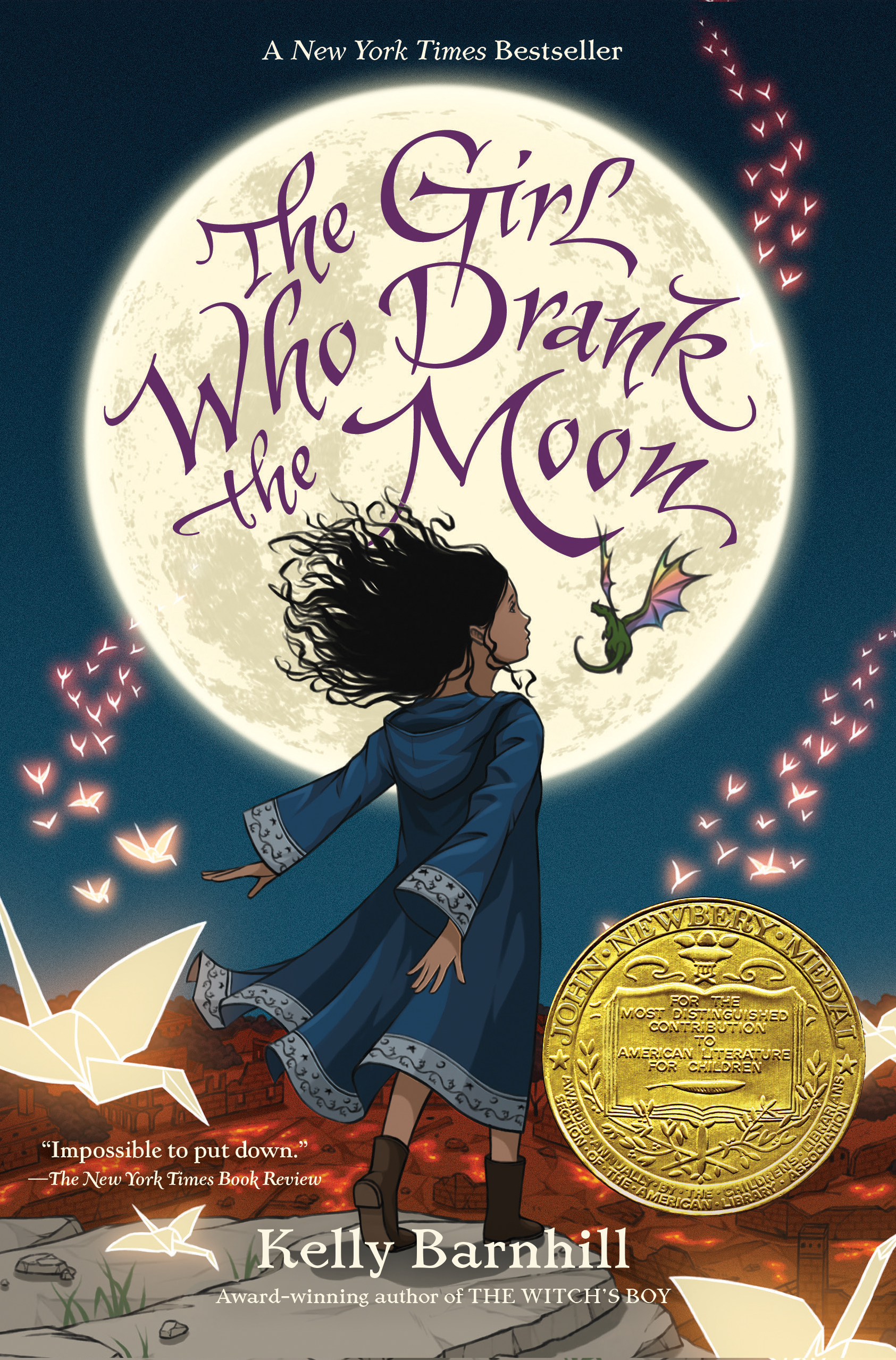 You said writing this book was dear to your heart. Why?
You said writing this book was dear to your heart. Why?
First of all, I really needed to spend some time thinking about the strange shape that a family can take and the strange shapes that love can take and how even though we can love one another with all of the fervor and the tenderness that goes with that, that we still make mistakes. We still get things wrong. And we still sometimes try to protect one another from sadness or harm even though it can be the actual protection that causes the sadness and harm. That was important for me to explore.
Where did the book come from?
I really started this book because of Glerk, the swamp monster. He was the very first thing that showed up. He was holding a daisy and he was saying a poem, actually the very last poem in the book. So I wrote down the poem and it appears, verbatim, just how I wrote it way back then. I don't know why I was thinking about a swamp monster. I'm not a visual thinker at all. It's extremely rare for me to get pictures in my head. So whenever I get an image in my head that pops up unbidden, first of all, I find it exhausting, and second of all, I pay attention to it because it's usually important, even if I don't know why.
So what does Glerk look like?
In my mind's eye, that one time I got a clear picture of Glerk, he was the color of algae, bright-green algae in a bog. And his eyes were very wide-spaced apart and very large. One thing that I don't think got into the text but is true is that his eyes move independently of one another. He's got very broad, damp jaws. So if you can imagine the face of a Chinese dragon but just generally more damp? I live in Minnesota, there are bogs everywhere; I have a great affinity for damp landscapes that are filled with life. He's of that substance, which might be gross to some people, but it's marvelous to me.
How did you manage such a complex plot structure? Storyboards? Index cards?
It's all instinct. My revision technique basically involves, "Select All/Delete." I do that a lot. It's not something I highly recommend, but it is mine, so I will claim it. It's returning again and again and again. Different threads will pull and tease out and wind around. Everything that makes sense is purely accidental. (Laughs.)
What are you working on now?
I'm working on a new book called The Sugar House, a retelling of the Hansel and Gretel story set in Minneapolis, in which the diabetic kid saves the day but nobody will believe him because he blew up the school. Not really, but that's how it plays in the media. It's about a kid who makes bad choices for sure, but he's a really good kid.
Speaking of how things play in the media, The Girl Who Drank the Moon addresses the recent discussions of "fake news" in a way, since the entire City of Sorrows is perpetuating a tragic tradition based on a lie they think is true.
I have a lot of friends who are journalists, and I remember in the fall after Hurricane Katrina we were having all these conversations about how the way we frame narrative can distort the facts. Are the people coming out of the broken store looters or scavengers? Well, it depends on my internal biases, right? So that was so interesting to me, and I wanted to be able to explore that in fiction. I didn't realize that this whole notion of fake news and false narratives would be so very relevant right now. I'm glad I can at least provide one avenue for people to discuss it.
It's been very gratifying to me to be able to talk to kids about big ideas like this. Fourth and fifth graders are incredibly global in how they think. And they are literally writing the universe with every step they take through the world. It's exciting. Books are so important for kids this age because they're tools and they're maps and they're lamps and they're swords and they're everything that they need to be able to navigate, and also rewrite, and also rebuild. It's a huge honor to be part of that process of mind-making and world-making. --Karin Snelson, children's & YA editor, Shelf Awareness
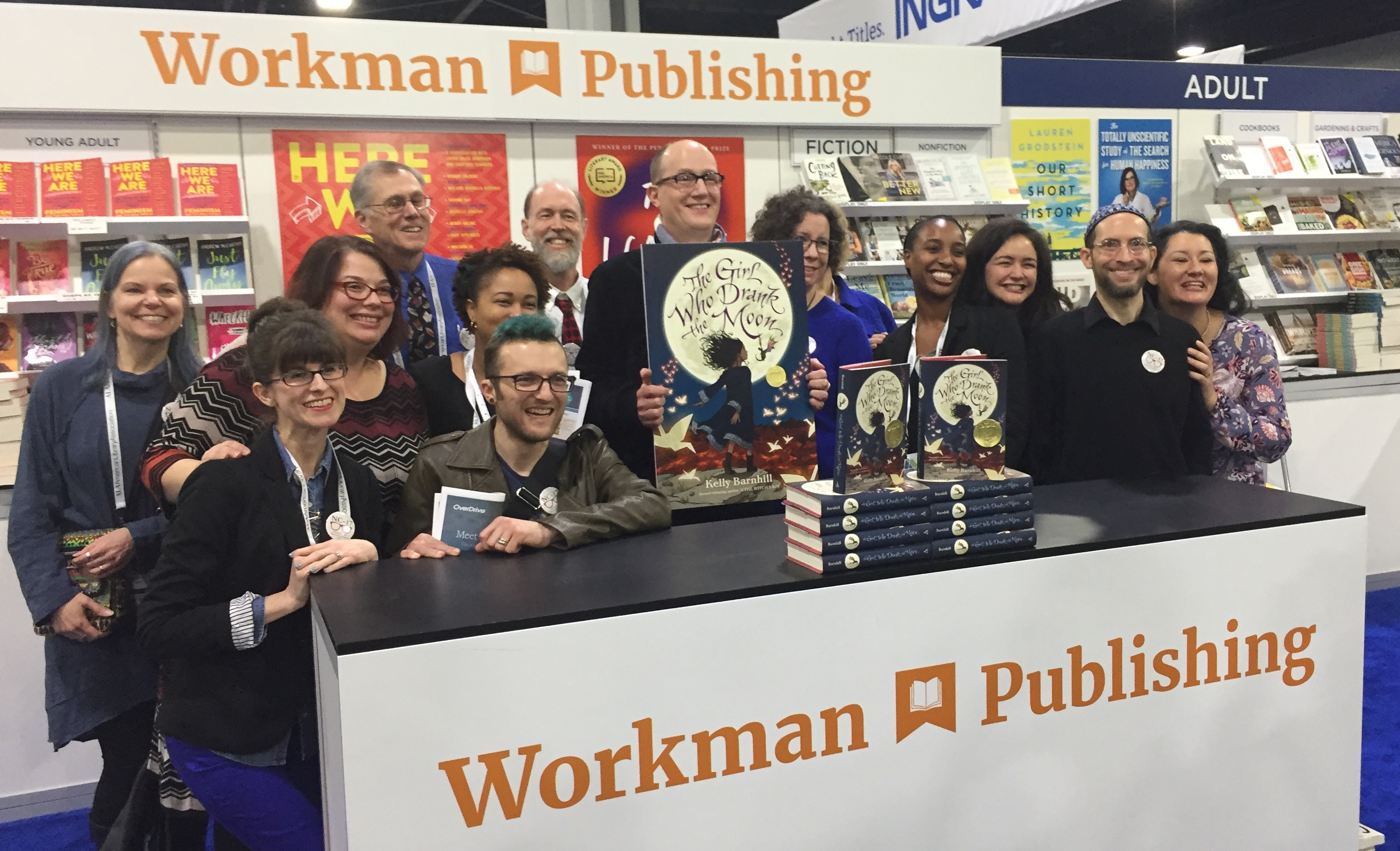








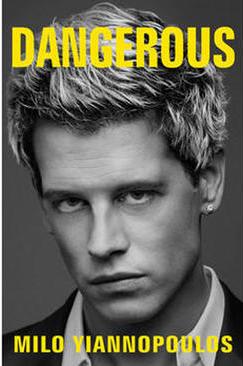 In a letter yesterday to authors
In a letter yesterday to authors BINC.1118.T2.2024YEARENDCAMPAIGN.jpg)
 In an offer it hopes will end a European Union investigation,
In an offer it hopes will end a European Union investigation, 
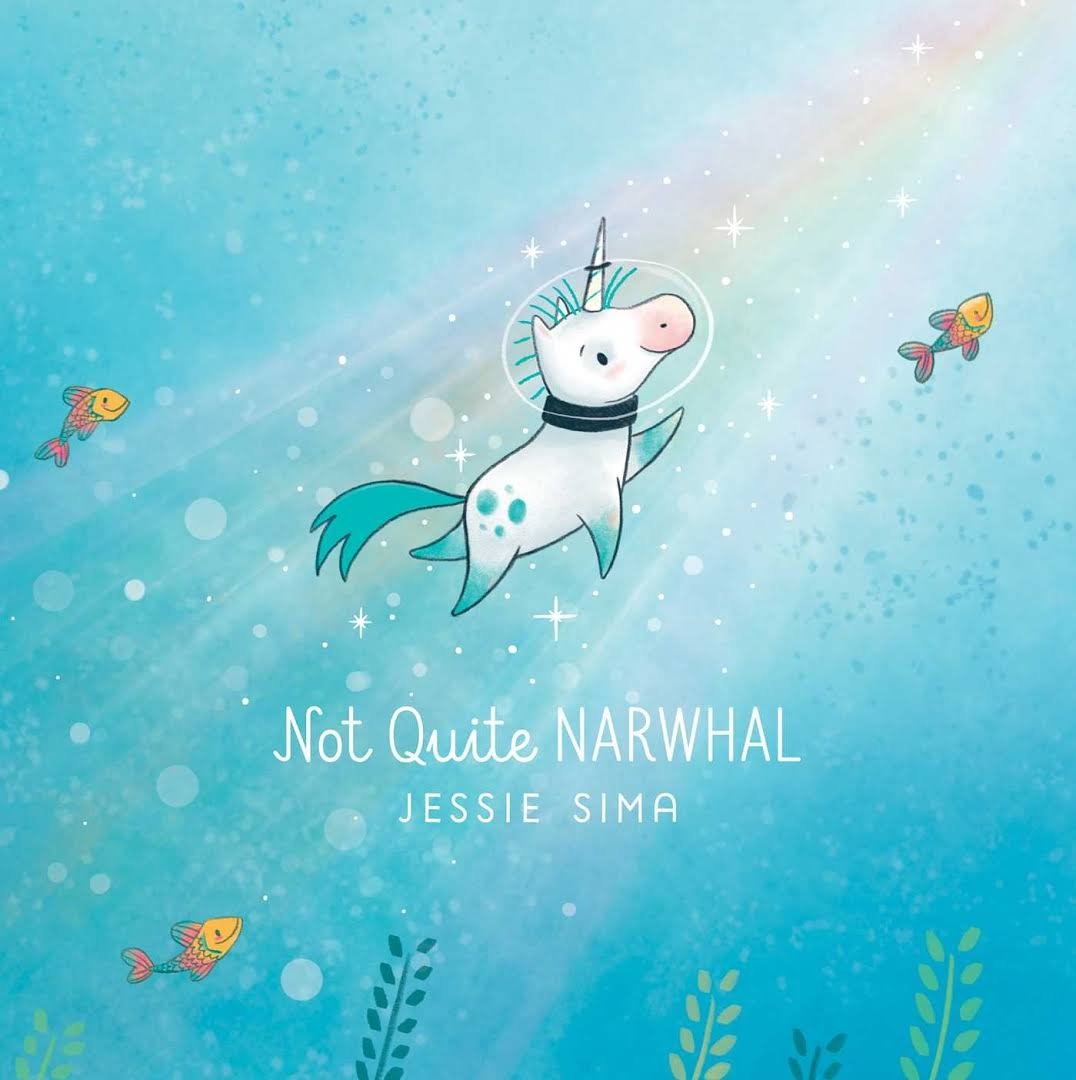 Arriving in stores on February 14 is Not Quite Narwhal (Simon & Schuster Books for Young Readers), the picture book debut of author and illustrator Jessie Sima. Kelp has grown up in the ocean thinking that he, like the rest of his family, is a narwhal, even though his horn is a little different and he's not as good a swimmer as a narwhal usually is. One day Kelp gets swept close to shore by a strong current and sees a creature that looks just like him, and soon he learns that he's not a narwhal but actually a unicorn. "This book is painfully adorable," said Brandi Stewart, children's book buyer at Changing Hands Bookstore in Tempe and Phoenix, Ariz., adding that she plans to recommend it as an adoption book for a child in a blended family or for anyone who has ever felt like they don't fit in. "The story is about finding your own way to belong," she said. "It's just beautiful."
Arriving in stores on February 14 is Not Quite Narwhal (Simon & Schuster Books for Young Readers), the picture book debut of author and illustrator Jessie Sima. Kelp has grown up in the ocean thinking that he, like the rest of his family, is a narwhal, even though his horn is a little different and he's not as good a swimmer as a narwhal usually is. One day Kelp gets swept close to shore by a strong current and sees a creature that looks just like him, and soon he learns that he's not a narwhal but actually a unicorn. "This book is painfully adorable," said Brandi Stewart, children's book buyer at Changing Hands Bookstore in Tempe and Phoenix, Ariz., adding that she plans to recommend it as an adoption book for a child in a blended family or for anyone who has ever felt like they don't fit in. "The story is about finding your own way to belong," she said. "It's just beautiful."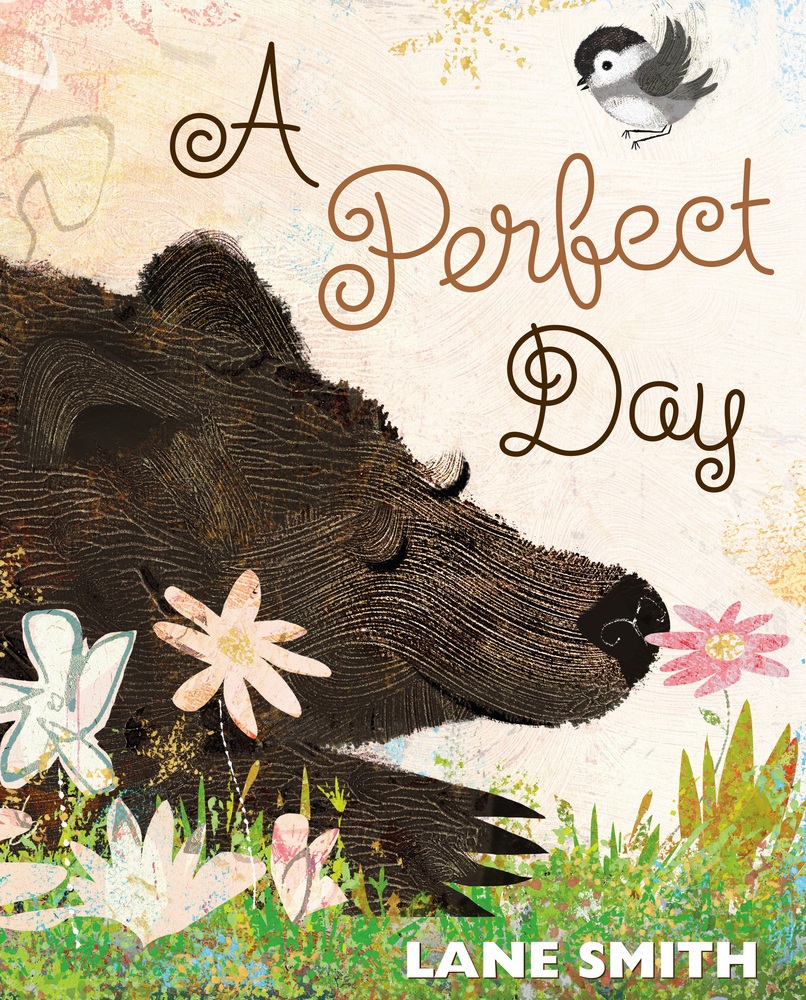 In Lane Smith's A Perfect Day, Cat, Dog, Chickadee and Squirrel are all having a great time doing their own thing. Cat is dozing in some daffodils, Dog is lounging in the pool, Chickadee is eating seeds from the bird feeder and Squirrel found a corncob. Once Bear comes along, however, their days are messed up to create a perfect day for Bear. Kate Schlademan, owner of the Learned Owl Book Shop in Hudson, Ohio, said she liked the book's message about perspective and that "perfect means something different for everyone. Loved the illustrations!" A Perfect Day will be available February 14 from Roaring Brook Press.
In Lane Smith's A Perfect Day, Cat, Dog, Chickadee and Squirrel are all having a great time doing their own thing. Cat is dozing in some daffodils, Dog is lounging in the pool, Chickadee is eating seeds from the bird feeder and Squirrel found a corncob. Once Bear comes along, however, their days are messed up to create a perfect day for Bear. Kate Schlademan, owner of the Learned Owl Book Shop in Hudson, Ohio, said she liked the book's message about perspective and that "perfect means something different for everyone. Loved the illustrations!" A Perfect Day will be available February 14 from Roaring Brook Press.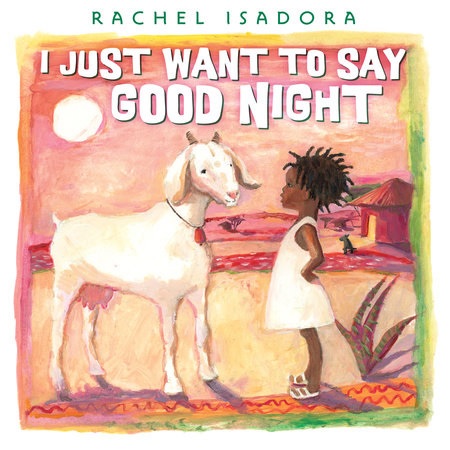 Caldecott Honor-winning author and illustrator Rachel Isadora returns on March 14 with I Just Want to Say Good Night, a new spin on the classic Goodnight Moon by Margaret Wise Brown and Clement Hurd, set on the African plains. I Just Want to Say Good Night follows Lala as she puts off going to bed by saying goodnight to her family's cat, goat, chickens and more one at a time. "Isadora perfectly captures the universal ritual of a child saying goodnight to everything as a way to stall going to bed," said Erin Barker, buyer and manager at Hooray for Books! in Alexandria, Va. "The book is humorous and gentle, and the main character is adorable." It will be published by Nancy Paulsen Books.
Caldecott Honor-winning author and illustrator Rachel Isadora returns on March 14 with I Just Want to Say Good Night, a new spin on the classic Goodnight Moon by Margaret Wise Brown and Clement Hurd, set on the African plains. I Just Want to Say Good Night follows Lala as she puts off going to bed by saying goodnight to her family's cat, goat, chickens and more one at a time. "Isadora perfectly captures the universal ritual of a child saying goodnight to everything as a way to stall going to bed," said Erin Barker, buyer and manager at Hooray for Books! in Alexandria, Va. "The book is humorous and gentle, and the main character is adorable." It will be published by Nancy Paulsen Books.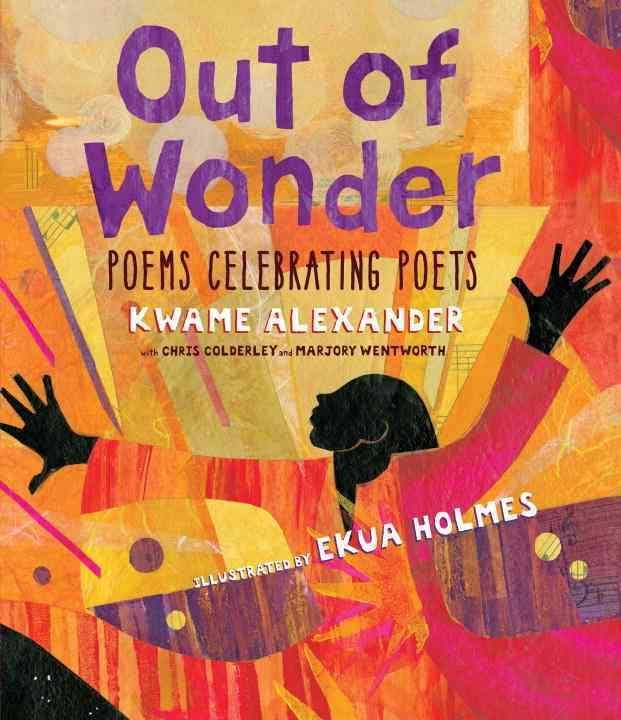
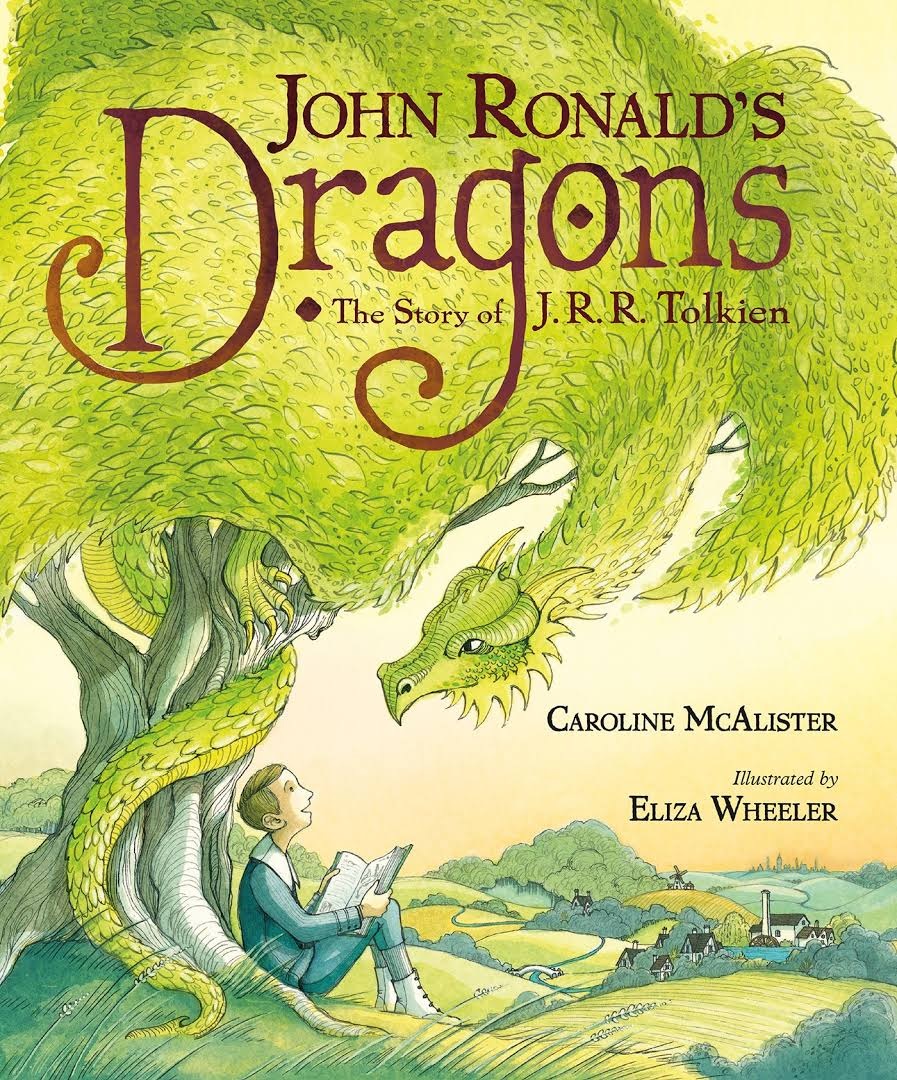 John Ronald's Dragons: The Story of J.R.R. Tolkien is a picture book retelling of the life of J.R.R. Tolkien and the events that inspired him to create arguably the world's best known fantasy series. Written by Caroline McAlister and illustrated by Eliza Wheeler, John Ronald's Dragons follows Tolkien's life from his early childhood and the loss of his mother to his service in World War I and the years beyond, when he decided to write of Middle Earth and dragons for the first time. Max Probst, children's book buyer at Vroman's Bookstore in Pasadena, Calif., recommended this Tolkien biography, calling it "a lot of fun." Available March 21.
John Ronald's Dragons: The Story of J.R.R. Tolkien is a picture book retelling of the life of J.R.R. Tolkien and the events that inspired him to create arguably the world's best known fantasy series. Written by Caroline McAlister and illustrated by Eliza Wheeler, John Ronald's Dragons follows Tolkien's life from his early childhood and the loss of his mother to his service in World War I and the years beyond, when he decided to write of Middle Earth and dragons for the first time. Max Probst, children's book buyer at Vroman's Bookstore in Pasadena, Calif., recommended this Tolkien biography, calling it "a lot of fun." Available March 21.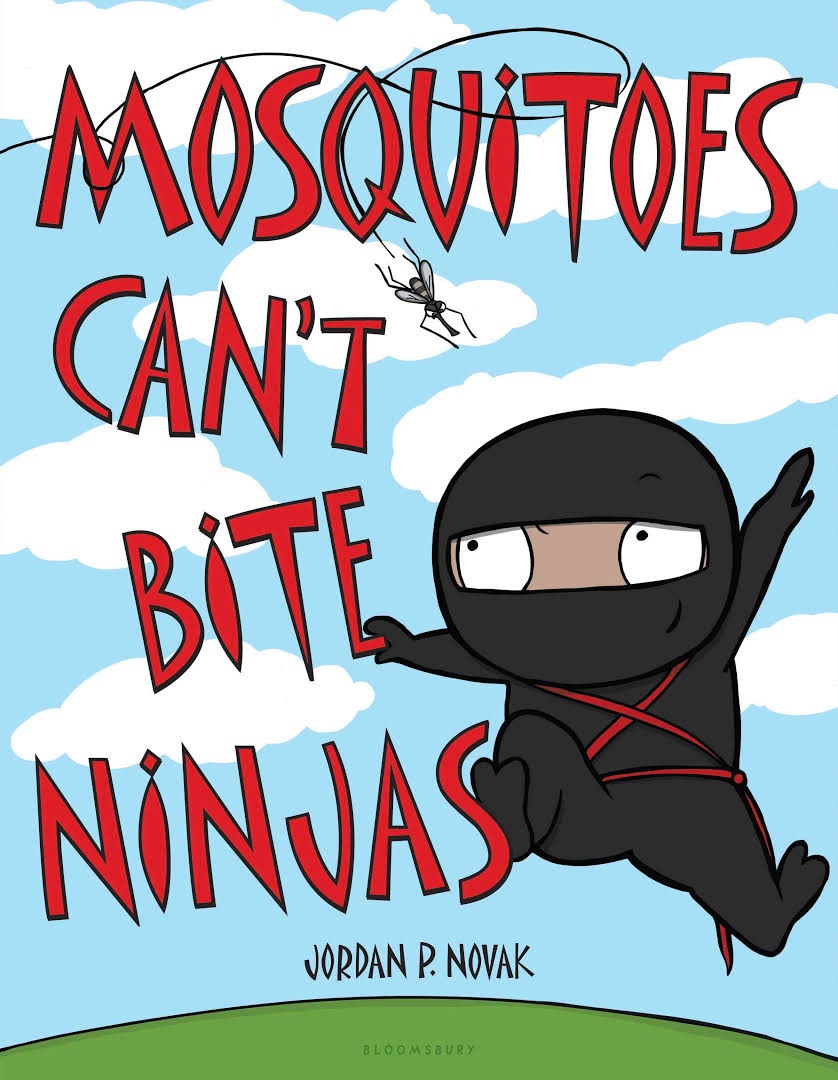 In Jordan P. Novak's early readers debut, Mosquitoes Can't Bite Ninjas, the only way to out-stealth a mosquito and avoid being bitten is to move like a ninja. Kate Schlademan of the Learned Owl said: "Mosquitoes bring out the ninja in all of us. Very funny!" Look for Mosquitoes Can't Bite Ninjas from Bloomsbury USA Children's on March 28.
In Jordan P. Novak's early readers debut, Mosquitoes Can't Bite Ninjas, the only way to out-stealth a mosquito and avoid being bitten is to move like a ninja. Kate Schlademan of the Learned Owl said: "Mosquitoes bring out the ninja in all of us. Very funny!" Look for Mosquitoes Can't Bite Ninjas from Bloomsbury USA Children's on March 28.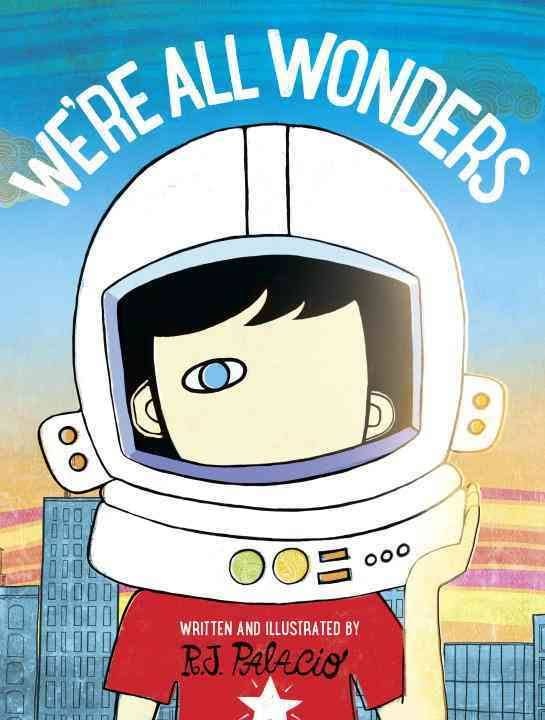 In 2012, R.J. Palacio published Wonder, about a young boy born with a facial deformity trying to fit in at school and lead a normal life, which went on to inspire the Choose Kind movement. On March 28, Palacio will publish We're All Wonders, a picture-book retelling intended for a younger audience. "Wonder is extended to a younger group with Palacio writing and illustrating the story of a boy who is really just a regular boy after all, but born with looks that are a bit different," said Judy Bulow of the Tattered Cover. "Choosing kindness extends to the preschoolers and kindergartners, too!" Published by Knopf Books for Young Readers.
In 2012, R.J. Palacio published Wonder, about a young boy born with a facial deformity trying to fit in at school and lead a normal life, which went on to inspire the Choose Kind movement. On March 28, Palacio will publish We're All Wonders, a picture-book retelling intended for a younger audience. "Wonder is extended to a younger group with Palacio writing and illustrating the story of a boy who is really just a regular boy after all, but born with looks that are a bit different," said Judy Bulow of the Tattered Cover. "Choosing kindness extends to the preschoolers and kindergartners, too!" Published by Knopf Books for Young Readers. The Legend of Rock Paper Scissors is the first collaboration between Drew Daywalt, author of The Day the Crayons Quit, and Adam Rex, author and illustrator of Frankenstein Makes a Sandwich. Coming April 4 from Balzer + Bray, The Legend of Rock Paper Scissors tells the legendary origin of the game Rock, Paper, Scissors, when warriors from the Kingdom of the Backyard, the Empire of Mom's Home Office and the Kitchen Realm battled it out for the first time. "We're going to sell a ton of this," said Max Probst of Vroman's. "It's a lot of fun."
The Legend of Rock Paper Scissors is the first collaboration between Drew Daywalt, author of The Day the Crayons Quit, and Adam Rex, author and illustrator of Frankenstein Makes a Sandwich. Coming April 4 from Balzer + Bray, The Legend of Rock Paper Scissors tells the legendary origin of the game Rock, Paper, Scissors, when warriors from the Kingdom of the Backyard, the Empire of Mom's Home Office and the Kitchen Realm battled it out for the first time. "We're going to sell a ton of this," said Max Probst of Vroman's. "It's a lot of fun."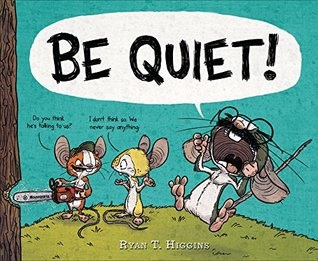 BE QUIET! by Ryan T. Higgins is the story of a mouse named Rupert, who wants nothing more than to star in a wordless, silent picture book. Rupert's friends, however, are extremely noisy, and their attempts to help do more harm than good. "The humor will delight both parents who appreciate a moment's silence and kids who have so much to say," said Erin Barker of Hooray for Books! "Perfect for interactive story times and read-alouds." It will be available April 4 from Disney-Hyperion.
BE QUIET! by Ryan T. Higgins is the story of a mouse named Rupert, who wants nothing more than to star in a wordless, silent picture book. Rupert's friends, however, are extremely noisy, and their attempts to help do more harm than good. "The humor will delight both parents who appreciate a moment's silence and kids who have so much to say," said Erin Barker of Hooray for Books! "Perfect for interactive story times and read-alouds." It will be available April 4 from Disney-Hyperion.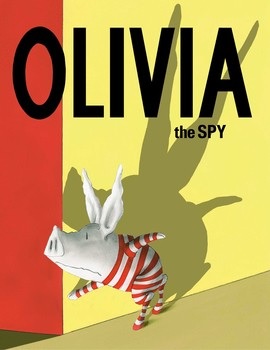 Olivia the pig returns on April 4 with Olivia the Spy by Ian Falconer. Olivia's birthday is coming up, and although she knows she's not supposed to eavesdrop on her mom to learn the birthday plans, she can't help it. But instead of birthday plans, Olivia hears her mom talking about Olivia's bad behavior, and suddenly her imagination runs wild with fears of being sent to boarding school. Recommended by both Judy Bulow of the Tattered Cover and Shelf Awareness children's editor Karin Snelson. Published by Atheneum/Caitlyn Dlouhy Books.
Olivia the pig returns on April 4 with Olivia the Spy by Ian Falconer. Olivia's birthday is coming up, and although she knows she's not supposed to eavesdrop on her mom to learn the birthday plans, she can't help it. But instead of birthday plans, Olivia hears her mom talking about Olivia's bad behavior, and suddenly her imagination runs wild with fears of being sent to boarding school. Recommended by both Judy Bulow of the Tattered Cover and Shelf Awareness children's editor Karin Snelson. Published by Atheneum/Caitlyn Dlouhy Books.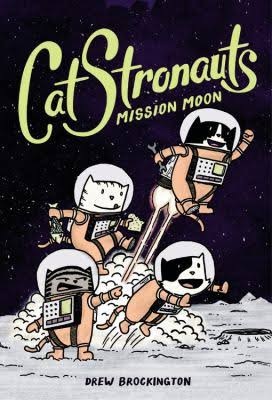 The final book on today's list is CatStronauts: Mission Moon, the debut graphic novel from author and illustrator Drew Brockington. In response to a global energy shortage, the World's Best Scientist decides that Earth's last hope is to build a solar power plant on the moon. To get the base built, he turns to the CatStronauts, a fearless group of space cats whose members include Major Meowser, Waffles the pilot, Blanket the technician, and science officer Pom Pom. Recommended by the booksellers at WORD Bookstore in Jersey City, N.J., and Brooklyn, N.Y., CatStronauts will be available April 18 from Little, Brown Books for Young Readers. --
The final book on today's list is CatStronauts: Mission Moon, the debut graphic novel from author and illustrator Drew Brockington. In response to a global energy shortage, the World's Best Scientist decides that Earth's last hope is to build a solar power plant on the moon. To get the base built, he turns to the CatStronauts, a fearless group of space cats whose members include Major Meowser, Waffles the pilot, Blanket the technician, and science officer Pom Pom. Recommended by the booksellers at WORD Bookstore in Jersey City, N.J., and Brooklyn, N.Y., CatStronauts will be available April 18 from Little, Brown Books for Young Readers. --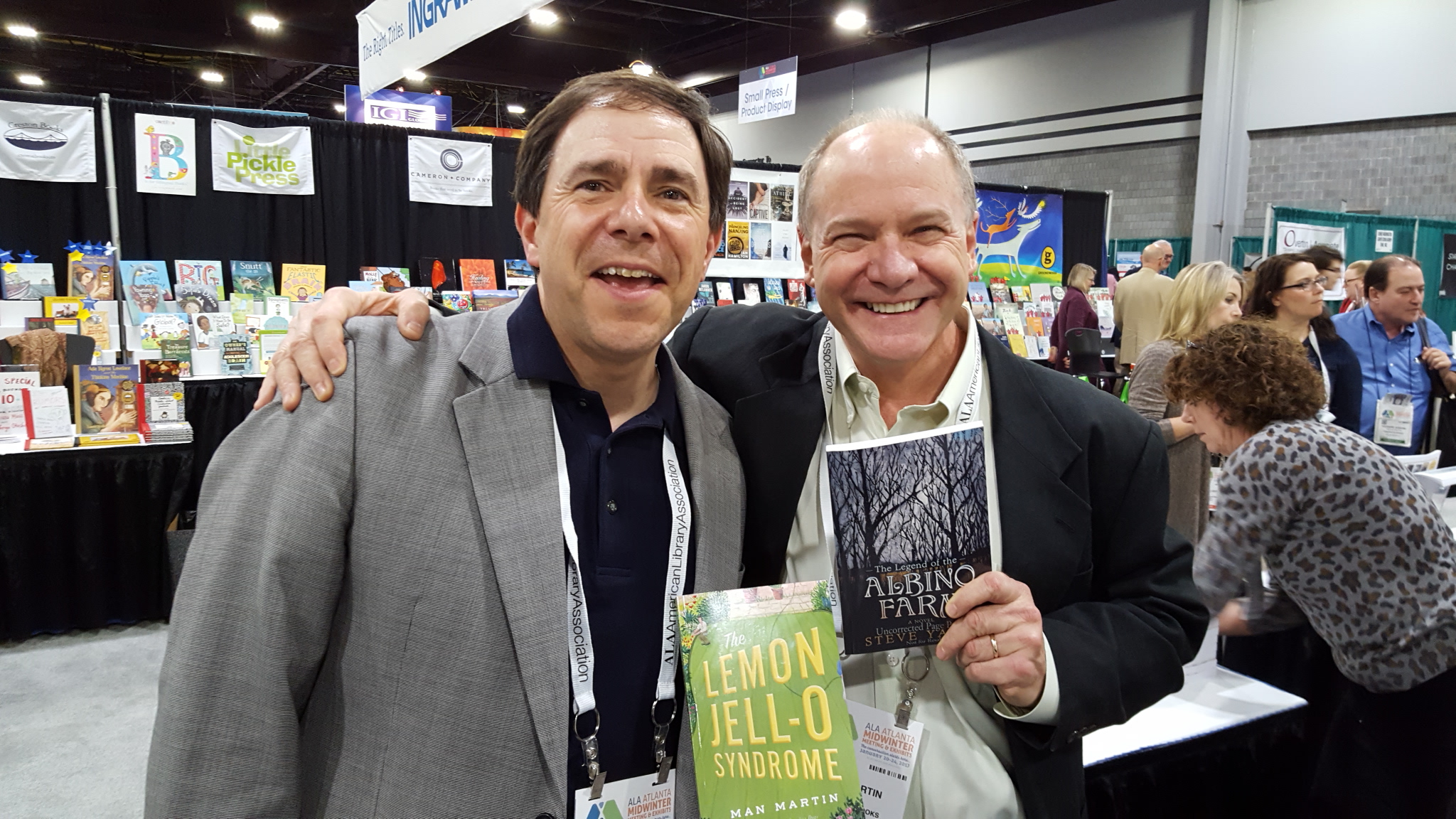 Steve Yates (l.), author of The Legend of the Albino Farm, and Man Martin (r.), author of The Lemon Jell-O Syndrome, pose holding ARCs of each other's upcoming works during an Unbridled Books signing at the American Library Association's Midwinter show in Atlanta.
Steve Yates (l.), author of The Legend of the Albino Farm, and Man Martin (r.), author of The Lemon Jell-O Syndrome, pose holding ARCs of each other's upcoming works during an Unbridled Books signing at the American Library Association's Midwinter show in Atlanta.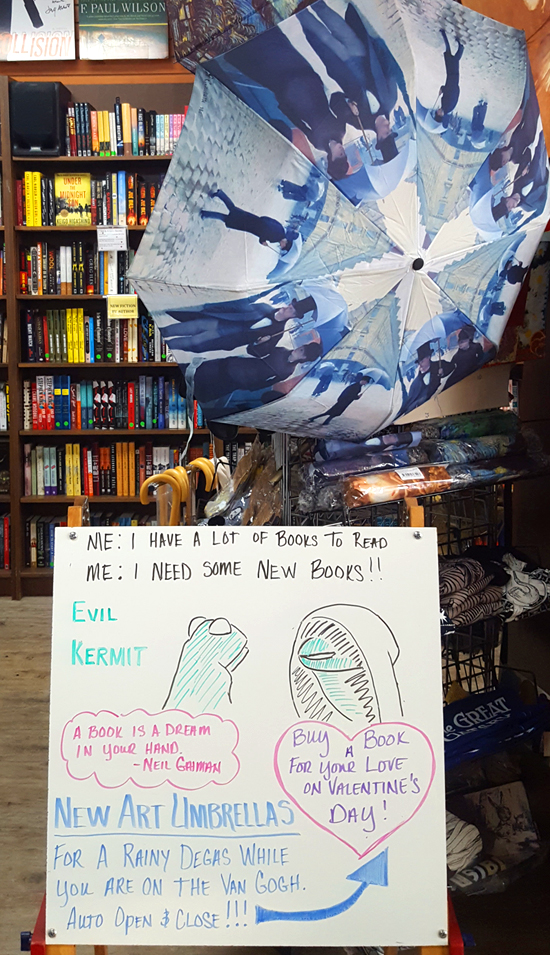 Jamille Christman, head of events and PR at
Jamille Christman, head of events and PR at  This Is How It Always Is: A Novel
This Is How It Always Is: A Novel_Bruce_Silcox_012317.jpg)
 You said writing this book was dear to your heart. Why?
You said writing this book was dear to your heart. Why?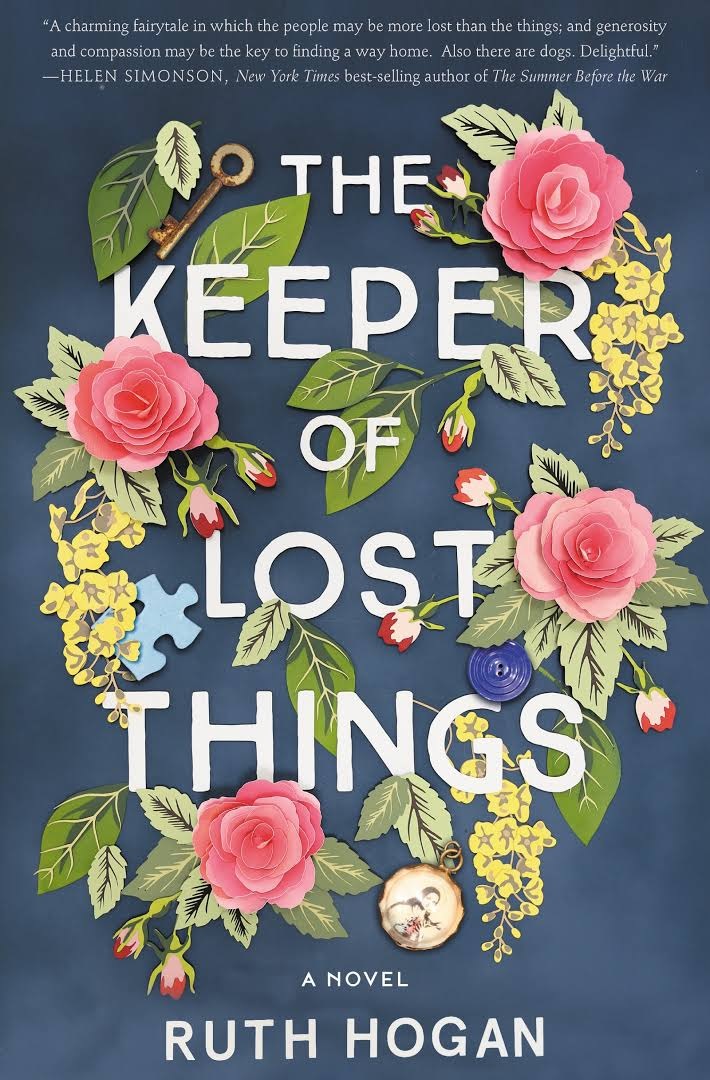 The mysteries behind unclaimed treasures, those who have lost them and the man determined to reunite possession and owner are the carefully tended threads of The Keeper of Lost Things, a rich and heartfelt first novel by Ruth Hogan.
The mysteries behind unclaimed treasures, those who have lost them and the man determined to reunite possession and owner are the carefully tended threads of The Keeper of Lost Things, a rich and heartfelt first novel by Ruth Hogan.